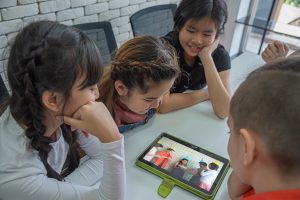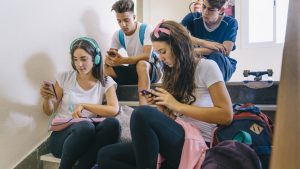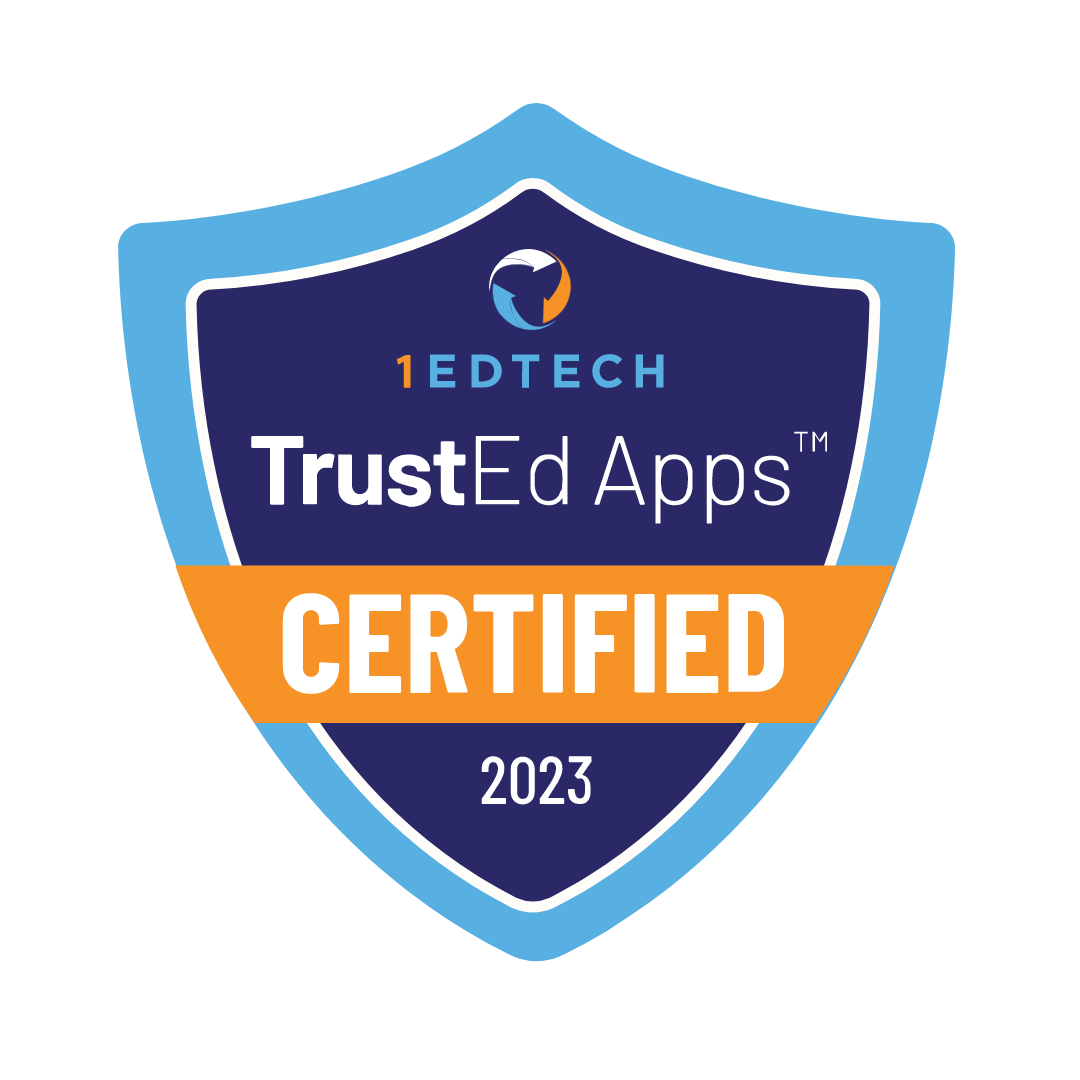Contents
- 1 Почему социальное взаимодействие имеет значение и как оно работает в онлайн-школах K-12?
- 2 Роль ученика в социальном взаимодействии в онлайн-школах K-12
- 3 Роль родителей в социальном взаимодействии в онлайн-школах K-12
- 4 Роль учителя в социальном взаимодействии в онлайн-школах K-12
- 5 Плюсы и минусы социального взаимодействия в онлайн-образовании K-12
- 6 Как онлайн-студентам оставаться на связи и общаться?
- 7 Заключение
Онлайн-образование получило широкое распространение в 21 веке. Миллионы студентов по всему миру получают образование K-12 онлайн. Они выполняют задания на ноутбуках и общаются в виртуальных классах. Они получают знания и развивают социальные навыки через интернет. Мы рассмотрим социальные взаимодействия в образовательных школах K-12.

Социальное взаимодействие в онлайн-образовании K-12 помогает развивать различные социальные навыки через виртуальные связи. Эти навыки включают в себя разрешение конфликтов, эмпатию, эффективную коммуникацию и работу в команде. Давайте подробнее рассмотрим, что такое социализация в онлайн-образовании и почему она важна.
Почему социальное взаимодействие имеет значение и как оно работает в онлайн-школах K-12?
Исследование “Социализация в онлайн-классе” , проведенное К. Ирвином и З. Л. Берге, изучает влияние социализации в онлайн-образовании. Оно показывает, что онлайн-курсы повышают вовлеченность и активность студентов, особенно менее активных.

Роль ученика в социальном взаимодействии в онлайн-школах K-12
Студенты – это ключ к созданию и развитию социальных взаимодействий. Студенты участвуют в онлайн-дискуссиях и работают над групповыми проектами, чтобы наладить контакт со сверстниками. Студенты начинают беседы и сотрудничают, чтобы создать сообщество. Обратная связь помогает им развиваться и оставаться вовлеченными в онлайн-обучение. Учащиеся управляют социальными взаимодействиями. Учителя и родители поддерживают и укрепляют эти усилия.
Роль родителей в социальном взаимодействии в онлайн-школах K-12
Родители играют решающую роль в формировании здорового социального взаимодействия для учащихся Онлайн-школы K-12. Они способствуют проведению встреч вне школы и обеспечивают баланс между онлайн и офлайн мероприятиями. Родители помогают наладить социальное взаимодействие, поддерживая участие своих детей в онлайн-мероприятиях. Родители следят за взаимодействием и решают любые проблемы, связанные с социальным взаимодействием. Они предоставляют ресурсы и инструменты для социального опыта. Родители поддерживают связь с учителями по вопросам социальной динамики.
Роль учителя в социальном взаимодействии в онлайн-школах K-12
Учителя являются посредниками между учениками и родителями. Учителя помогают родителям выстраивать здоровое социальное взаимодействие с учениками. Они создают для учащихся возможности для дискуссий и групповых проектов. Учителя способствуют общению и руководят деятельностью учеников, чтобы обеспечить сотрудничество. Учителя улаживают конфликты и дают обратную связь по социальным навыкам ученикам и родителям.
Плюсы и минусы социального взаимодействия в онлайн-образовании K-12
Социальное взаимодействие в онлайн-образовании имеет свои плюсы и минусы. Мы выделяем пять основных преимуществ и недостатков.

Преимущества социальных взаимодействий в онлайн-образовании заключаются в следующем:
- Студенты испытывают меньшее давление, у них больше времени на размышления.
- Виртуальный класс снижает уровень издевательств и притеснений.
- Индивидуальная обратная связь снижает стресс по сравнению с публичной обратной связью.
- Студенты общаются со сверстниками по всему миру и узнают о разных культурах.
- Онлайн-образование снижает дискриминацию по признаку одежды.
К недостаткам социальных взаимодействий в онлайн-образовании относятся:
- Встречи в реальной жизни ограничены.
- Студенты прилагают больше усилий, чтобы сформировать прочные связи со сверстниками.
- Для пассивных студентов характерен низкий уровень социального взаимодействия.
- Текстовое общение приводит к конфликтам и недопониманию.
- Студенты прилагают больше усилий, чтобы получить обратную связь от преподавателей.
Возможности социализации в онлайн-школе
Онлайн-школы предлагают различные возможности для социализации. В таблице ниже представлены десять социальных возможностей и их краткие описания для студентов в Онлайн-школе Legacyl.
| СОЦИАЛЬНАЯ ВОЗМОЖНОСТЬ | КРАТКОЕ ОПИСАНИЕ |
|---|---|
| Внеклассные мероприятия и виртуальные клубы | Онлайн-школа Legacy предлагает четыре онлайн-клуба для развития социальных и специализированных навыков. К специализированным навыкам относятся программирование, математика, искусство и изучение языков. Это клуб кодирования, клуб STEM, клуб искусства и клуб языка и культуры. |
| Платформы для совместного обучения | Инструменты для группового обучения и совместной работы над проектами |
| Виртуальные обсуждения в классе | Живые или записанные дискуссии на темы занятий |
| Group projects | Совместные задания с одноклассниками |
| Интерактивные семинары | Сессии по развитию навыков и взаимодействию со сверстниками |
| Репетиторство со сверстниками | Студенты помогают друг другу в изучении трудных предметов |
| Дискуссионные форумы | Онлайновые пространства для тематических бесед |
| Группы в социальных сетях | Частные группы на социальных платформах для школьных сообществ |
| Онлайн-соревнования | Конкурсы по различным предметам или навыкам |
Социальные возможности за пределами онлайн-школы
Студенты организуют социальные мероприятия за пределами онлайн-школы, используя ее инструменты. Они создают встречи и сообщества в социальных сетях. Они планируют такие мероприятия, как посещение музеев, выставок или концертов, исходя из своих интересов. Онлайн-школы поощряют и поддерживают встречи студентов за пределами виртуального класса.
Как онлайн-студентам оставаться на связи и общаться?

Студенты используют различные методы, чтобы оставаться на связи и взаимодействовать со сверстниками. Эти методы предоставляют как онлайн-школы, так и интернет. К ним относятся виртуальные учебные группы, дискуссионные форумы, приложения для обмена сообщениями, видеозвонки и чаты. Наиболее распространенным способом поддержания социальных связей для студентов являются социальные сети. К таким социальным сетям относятся Facebook, Instagram, X, и TikTok.
| Родители, обратите внимание
Исследование “Взаимосвязь между использованием социальных сетей и социальной тревожностью у студентов колледжа: Эффект посредничества коммуникативного потенциала”,проведенное Фэнся Лай и коллегами, показало, что пассивное использование социальных сетей повышает социальную тревожность. Активное использование социальных сетей снижает социальную тревожность. Коммуникативный потенциал частично опосредует эти эффекты. В исследовании приняли участие 1740 студентов из семи колледжей Китая. |
Заключение
Социальное взаимодействие в онлайн-школах так же важно, как и в традиционных. Ученики, родители и учителя играют свою роль в обеспечении успешного социального взаимодействия. Мы уже обсуждали их роли, а также преимущества и недостатки социального взаимодействия в онлайн-образовании. Студенты проявляют инициативу и организованность, чтобы справиться с этими проблемами и полноценно участвовать в социальном взаимодействии в сети.





